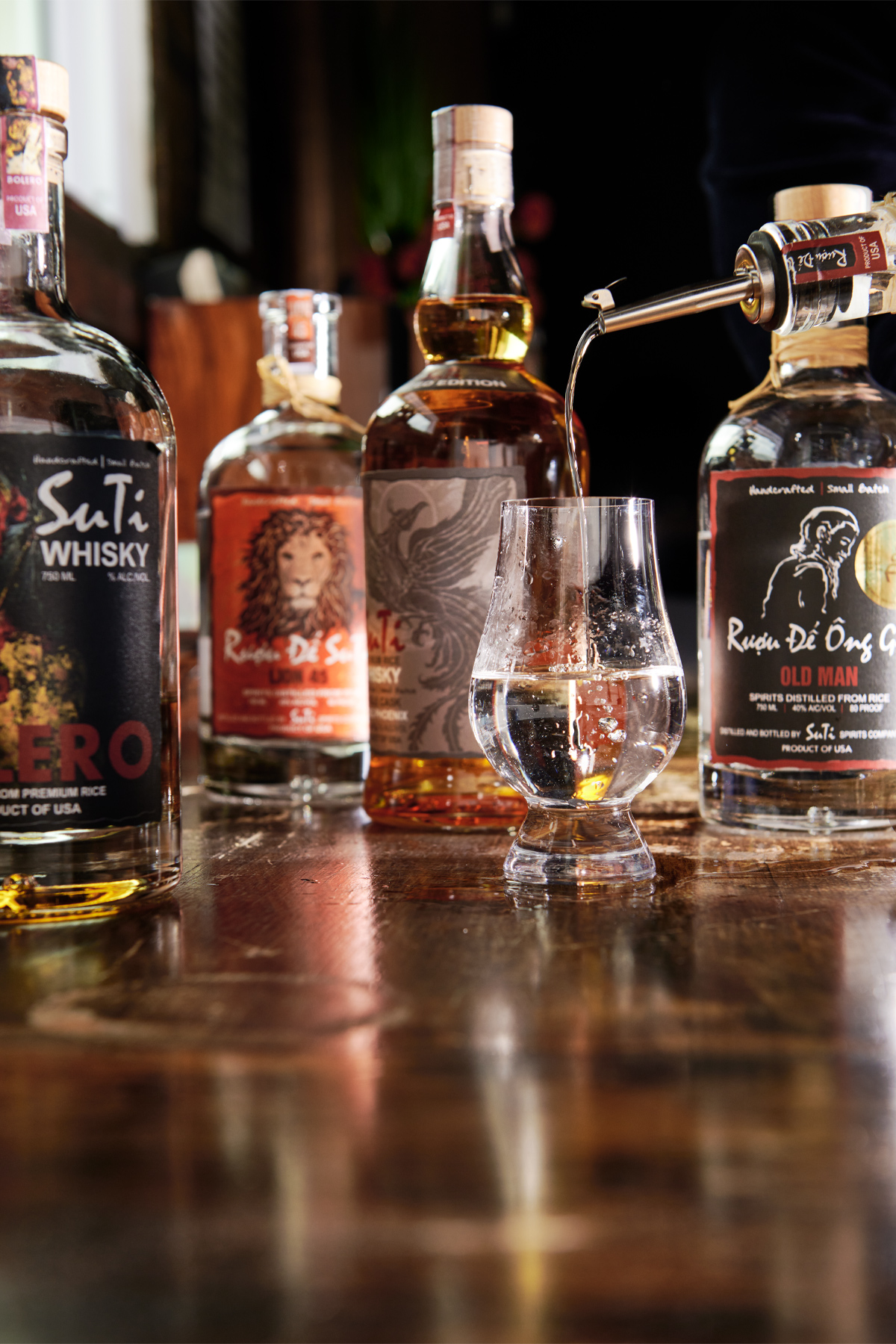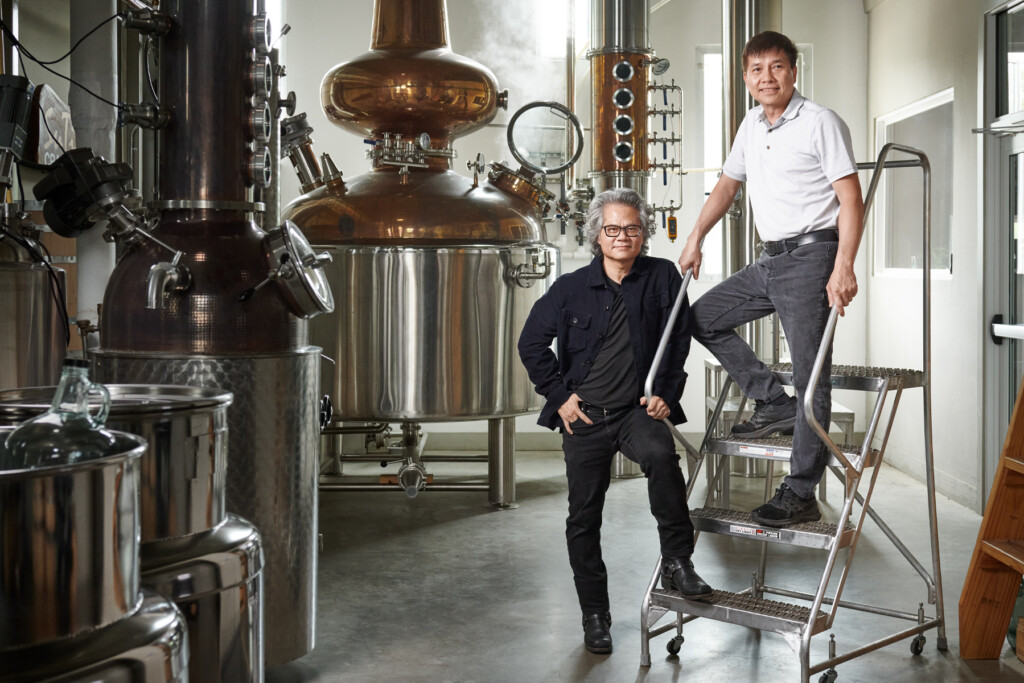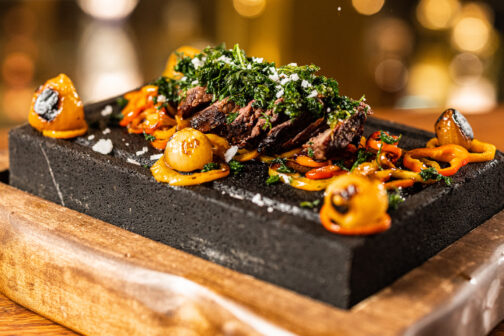It took almost 10 years for Suy Dinh to feel comfortable enough with his rượu đế recipe to open SuTi Craft Distillery in November 2020 with co-founder Tien Ngo. It was about time, too. They purchased land in Kennedale, a town between Fort Worth and Arlington, in 2016 for their passion project and spent four years building it from the ground up.
The friends have known each other for decades and are related by marriage—Ngo’s eldest brother is married to Dinh’s sister. But the pair have something else that brings them together: Their love for Vietnamese culture in the form of a special distilled rice liquor called rượu đế. It manifested into SuTi, their rice distillery and the only U.S. producer of rượu đế.
Rượu đế, also known as Vietnamese moonshine, is a hard liquor made from distilled fermented rice. It’s sipped and clinked in the most elegant of occasions to everyday meals, Ngo says.
“I’ve heard that old ladies, they like to drink this in the morning to keep them warm,” he says. “They wake up at 5 o’clock in the morning, and they just do one shot.”
Dinh and Ngo often heard of people making rượu đế in villages throughout Vietnam. Both grew up in the U.S. following the war and never experienced rượu đế being made at home—Dinh came to the U.S. with his family in 1975, and Ngo escaped on his own in 1980.
They quickly learned rượu đế linked people to memories of life in Vietnam, but they couldn’t find it in the U.S. Ngo has been back to Vietnam several times to see his family, and he says locals will always tempt visitors with rượu đế.

Dinh hasn’t been back since he escaped Vietnam almost five decades ago. His first time trying rượu đế was when he started making it as a hobby in 2009. When he was starting out, Dinh said he did taste tests with people who had tried rượu đế to get the right notes of the liquor.
“When you cook rice and you open [the cooker], you smell the rice—that’s what rượu đế should taste like,” he says. “Rượu đế should have that aroma and finish of rice.”
In the tasting room, fitted with a solid wood bar, wood grain décor, and cognac-colored panels, customers can try one of two rượu đế variations at SuTi: Old Man and Lion 45. Old Man is made with jasmine rice from Louisiana and is a 90-proof liquor. It’s fragrant and has a smooth, nutty aftertaste. Lion 45, an 80-proof liquor, has a sharper but sweet aftertaste that is citrus-like, similar to coconut water. The rice for Lion 45 comes from South Texas.
SuTi has boomed into a destination for Vietnamese locals and travelers who want a taste of home. There are about 2.18 million Vietnamese people living in the U.S., according to 2019 Pew Research Data. Dallas ranks fourth behind Los Angeles, Houston, and San Jose. The most common travelers SuTi see hail from Houston, they say.
Customers often stop by to pick up a bottle or two for house parties. Sometimes a group of people will come in and buy several bottles for weddings. (The limit is two bottles per person.) Ngo says the eldest customer they’ve had was 95 years old. He took a sip of SuTi rượu đế in the tasting room and said he felt like he was 16 again, in Vietnam.
For Dinh, living in Vietnam is a distant memory. Dinh spent most of his life growing up stateside, but he says he’s gotten “more Vietnamese” as he’s gotten older.
When Ngo goes back to Vietnam, he notices more skyrises and fewer pastures of grass. Things are modernized, and more western influences have seeped into everyday culture and food. “It’s not the same Vietnam,” he says.
Making rượu đế helps both connect to their Vietnamese roots. These days, they find comfort slurping on a bowl of pho or eating a bánh mì sandwich. And always, paired with a glass of rượu đế.
How It’s Made
Dinh is the primary distiller at SuTi. For one batch of rượu đế, Dinh cooks about 650 pounds of rice for one day before it ferments for about five to six days. During fermentation, Dinh closely monitors the temperature of each batch and ensures the yeast is fed with enough sugar. When the batch is ready, and looks slightly yellow, Dinh puts the fermented rice into a machine that boils it and captures the vapor from the mixture. That vapor is then bottled into SuTi rượu đế.
This story originally appeared in the June issue of D Magazine with the headline, “A Taste of Home.” Write to nataly.[email protected].
Get the SideDish Newsletter
Author







